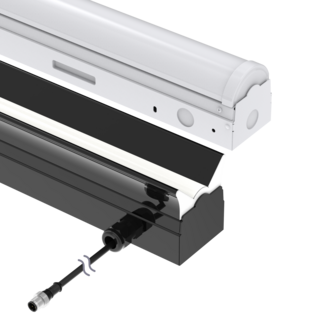Lux to Lumens Calculator: How Much Light Do You Need?

Summary: Providing the right amount of light for a task can have a significant impact on efficiency, productivity, and safety. The amount of light needed to properly illuminate a task or process can vary by application.
The Illuminating Engineering Society (IES) recommends illumination levels for hundreds of specific applications in industrial settings. This article explains how to determine lighting needs by looking at lux and lumens. You can also calculate lux to lumens using the tool below.
Lux to Lumens Calculator
The lux to lumens calculator below will help you choose the illumination solution that best meets the specific requirements of your application. Banner Engineering offers a number of high-quality, energy-efficient LED lighting products that can be used to solve a diverse range of industrial applications.
More About Lux and Lumens
Lux: The amount of light that is cast on a surface is called illuminance, which is measured in lux. This can be thought of as light intensity within a specific area.
Lumens: The total output of visible light from a light source is measured in lumens. Typically, the more lumens a light fixture provides, the brighter it is.
One lux is equal to one lumen per square meter (lux = lumens/m2). Essentially, as light travels from the emitter, it will disperse throughout an area. The further the light has to travel the more it will be dispersed. Therefore, the amount of lux in an area or on a surface can vary depending upon the distance the light travels and the angle at which it is dispersed.
Where the lumens provided by a given emitter are the same, light that travels less distance and/or is more narrowly focused will appear brighter because lux are concentrated in a smaller area than light that has traveled a greater distance and has been dispersed over a wider area.
Recommended Lux by Application and Age
| Application | Recommended Lux Ages 25-65 | Recommended Lux Ages 65+ |
|---|---|---|
| Application Warehouse | Recommended Lux Ages 25-65 100 | Recommended Lux Ages 65+ 200 |
| Application Work area | Recommended Lux Ages 25-65 150 | Recommended Lux Ages 65+ 300 |
| Application General assembly | Recommended Lux Ages 25-65 1,000 | Recommended Lux Ages 65+ 2,000 |
| Application Detailed assembly | Recommended Lux Ages 25-65 2,000 | Recommended Lux Ages 65+ 4,000 |
| Application Fine inspection | Recommended Lux Ages 25-65 5,000 | Recommended Lux Ages 65+ 10,000 |
Recommended lux levels for general work conditions. Source: IES Handbook.





